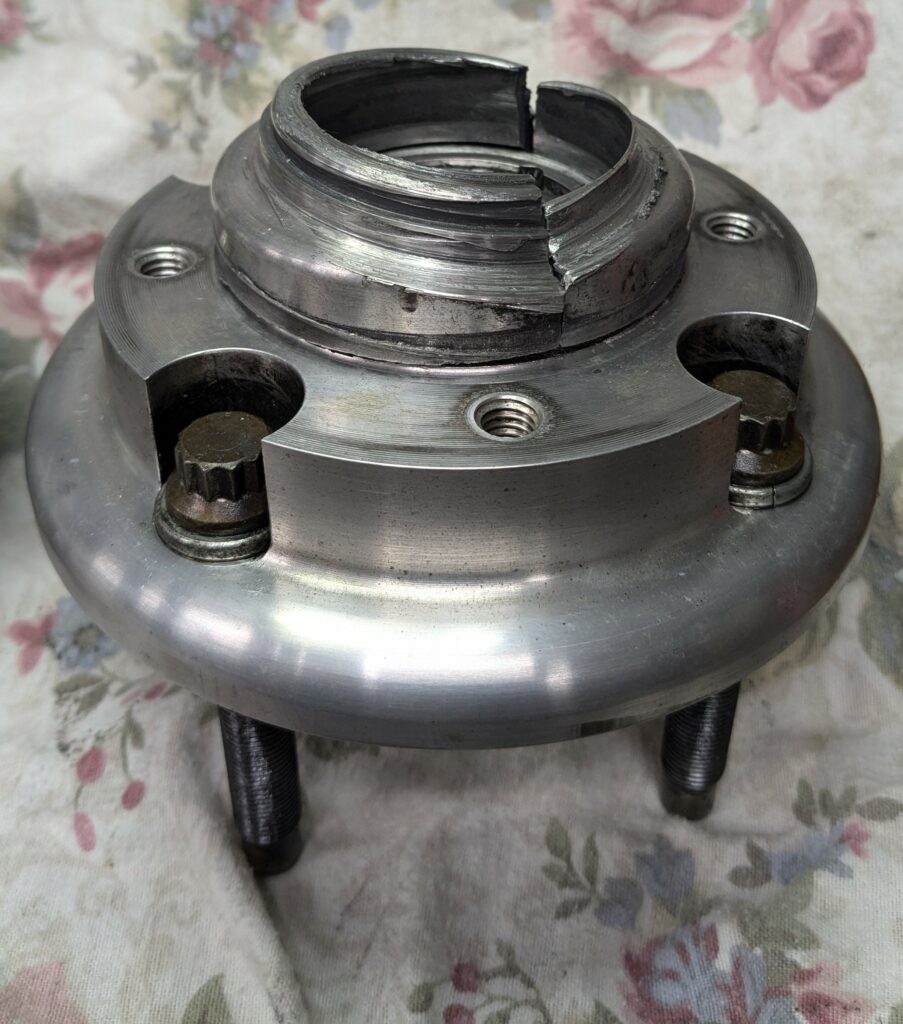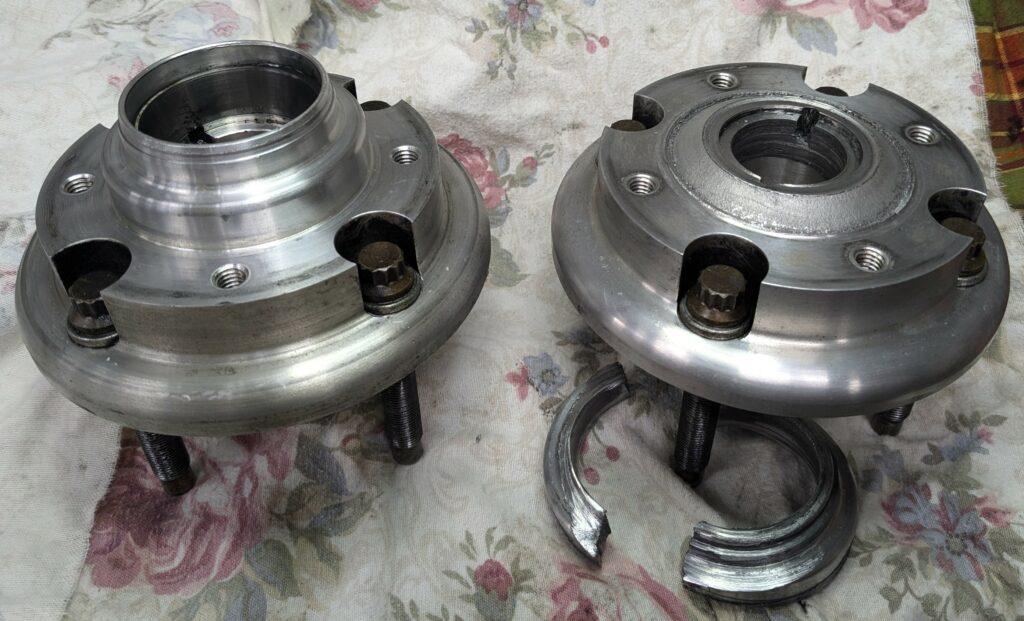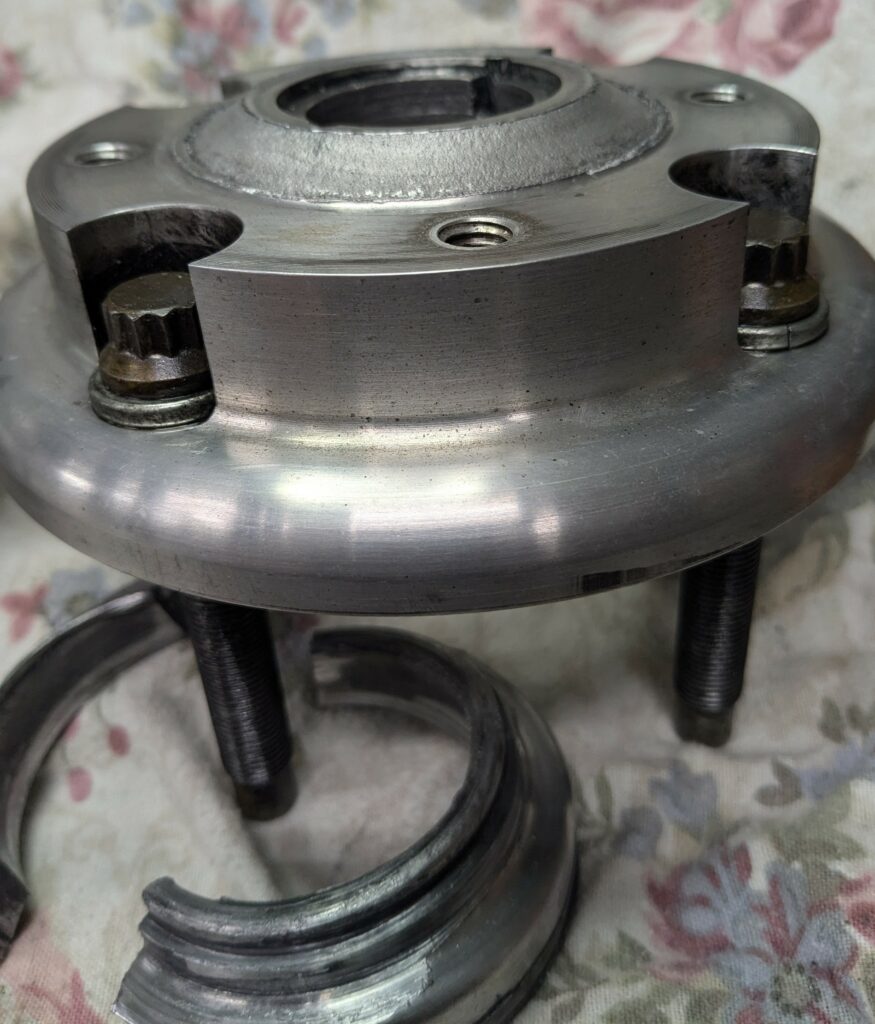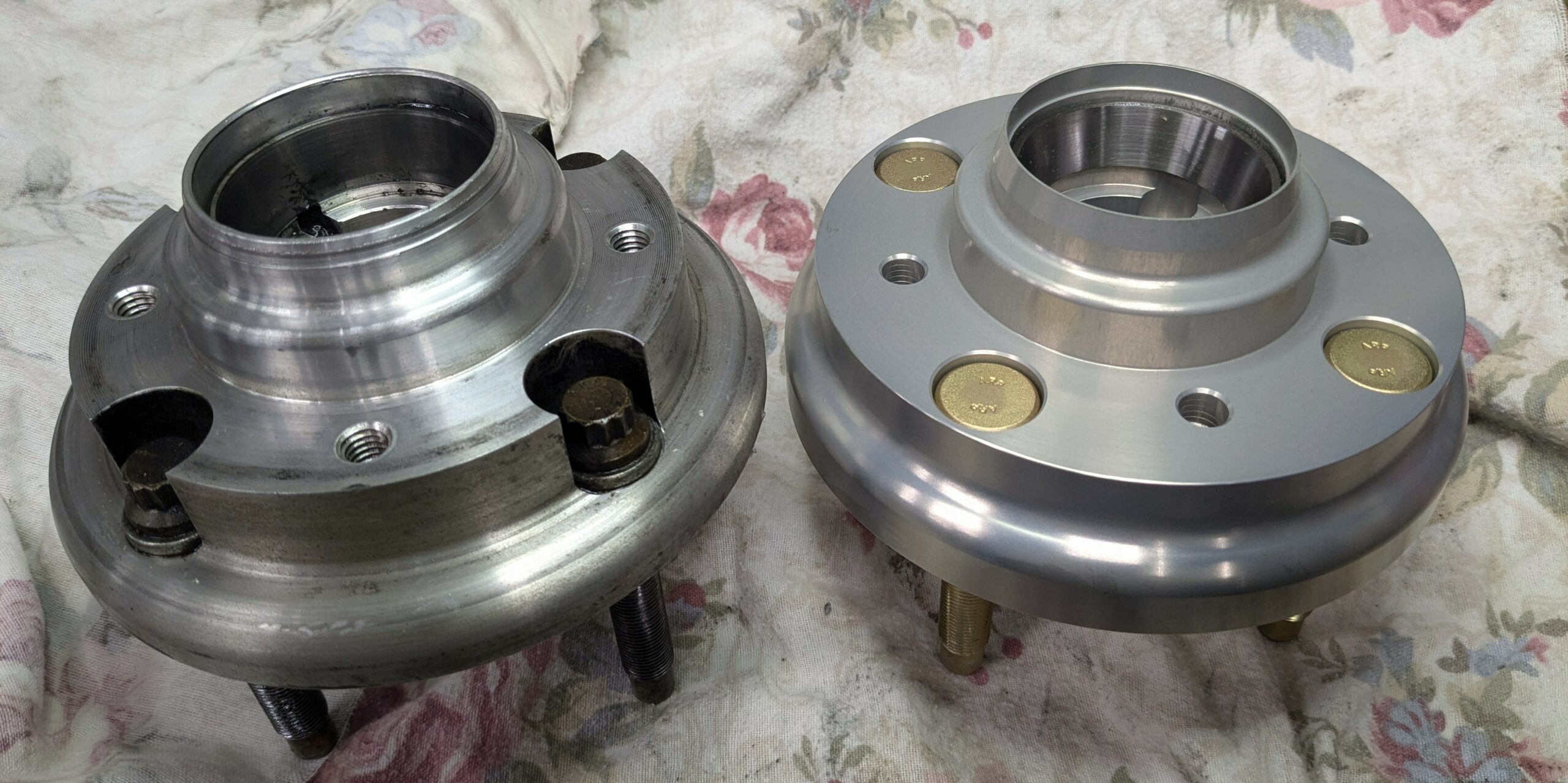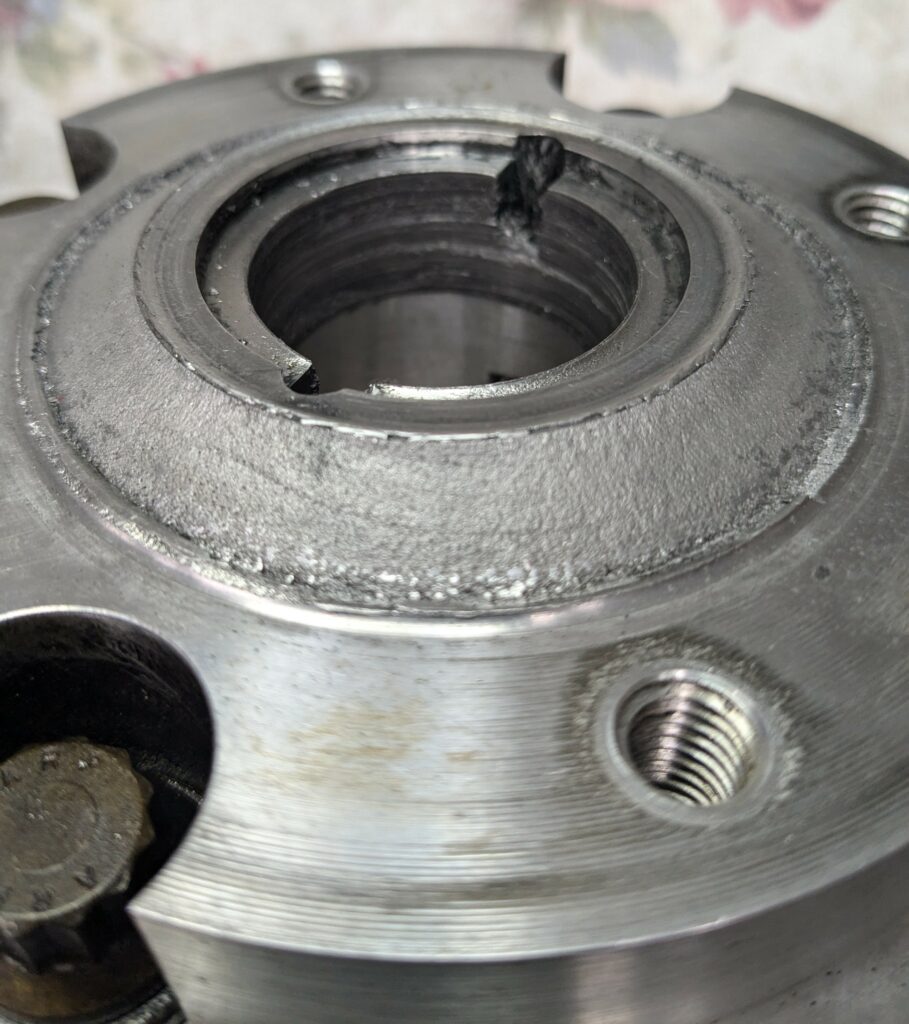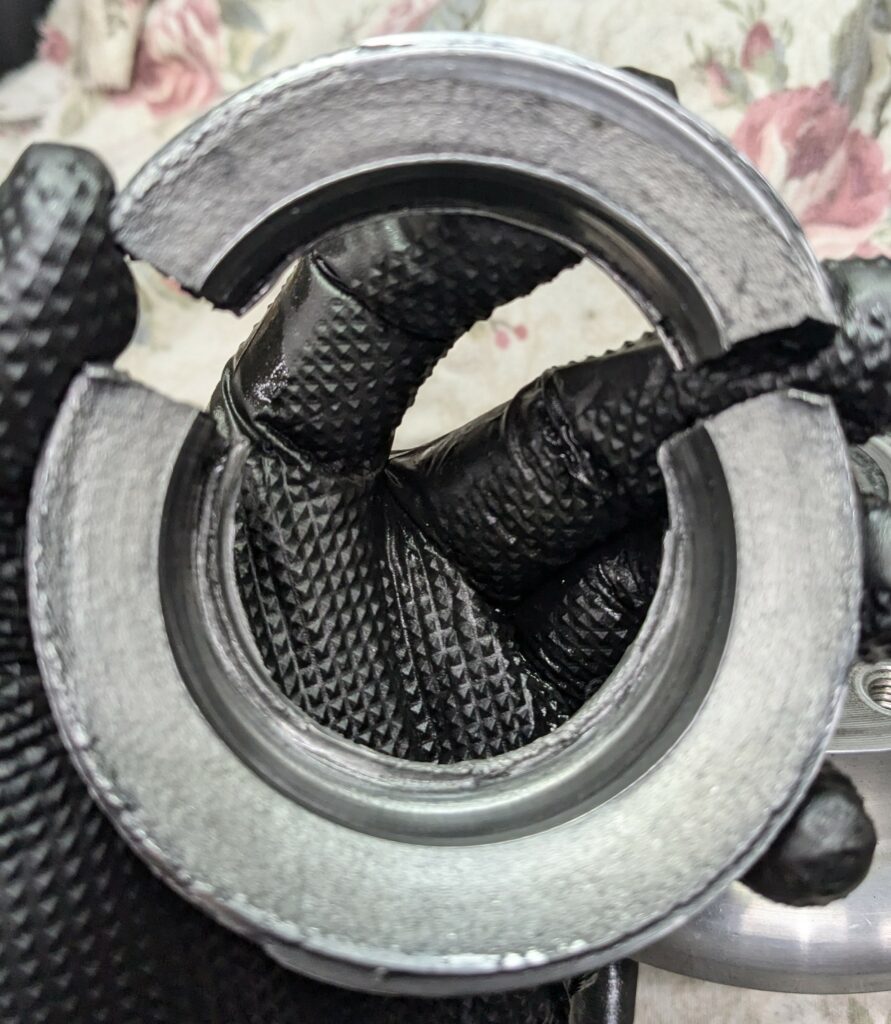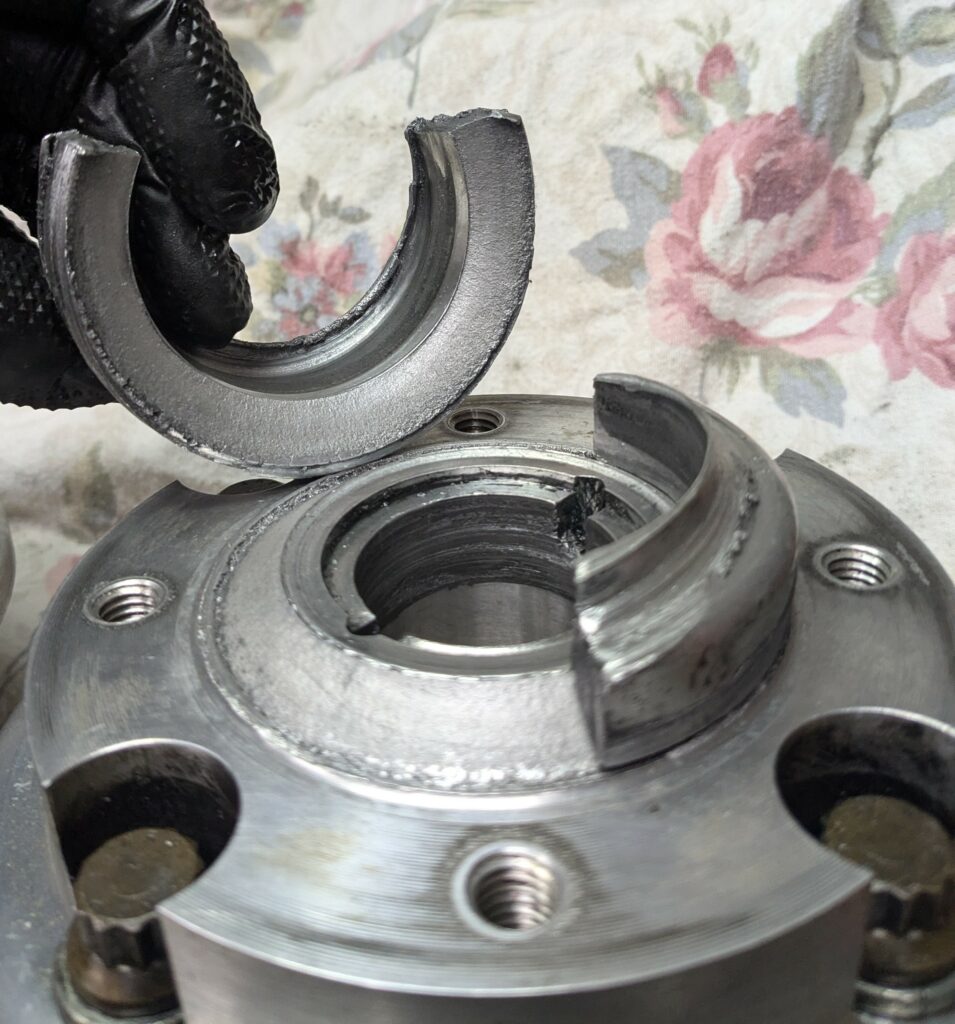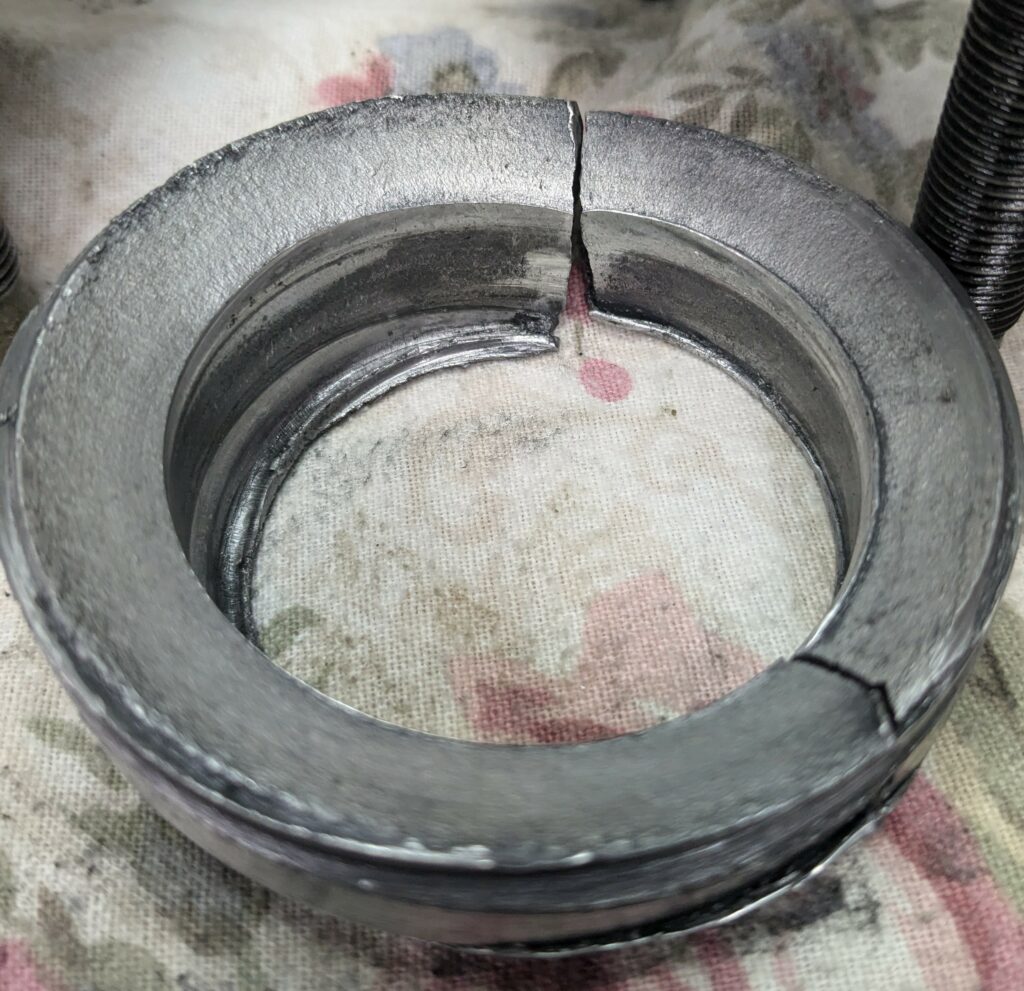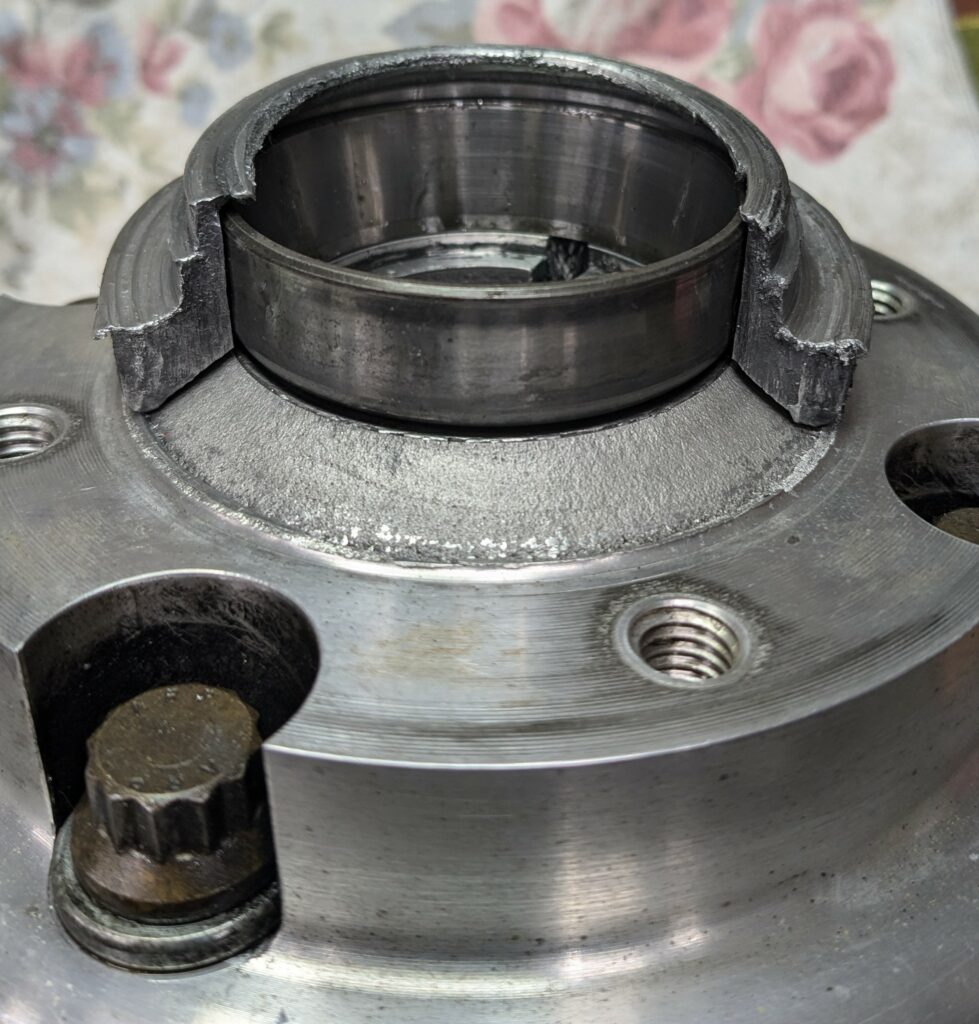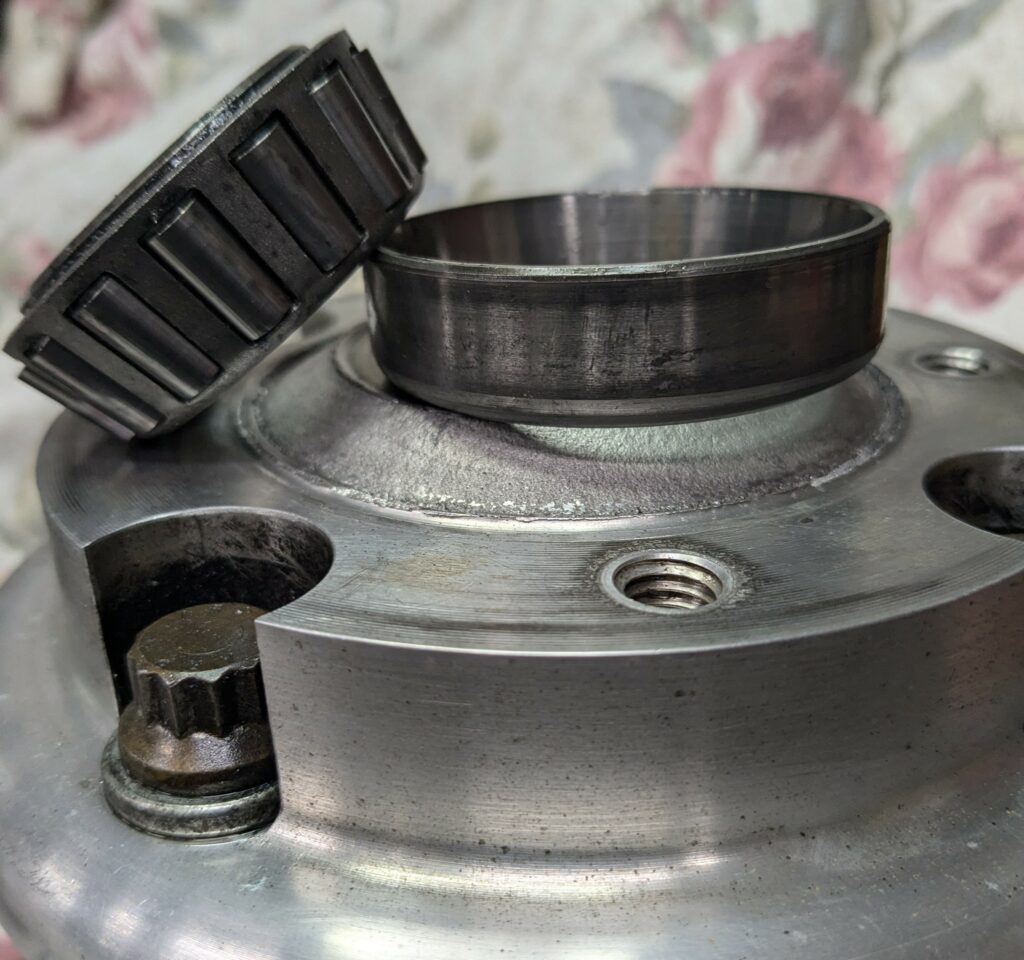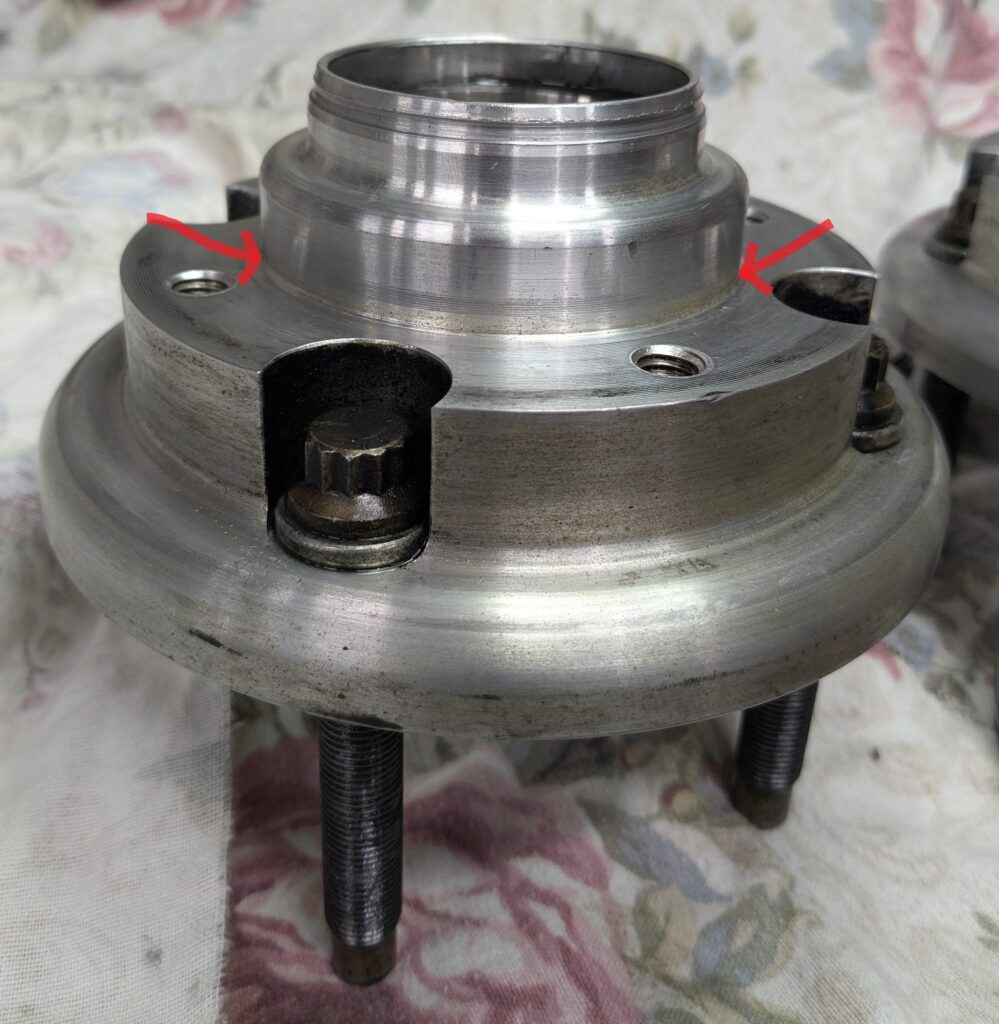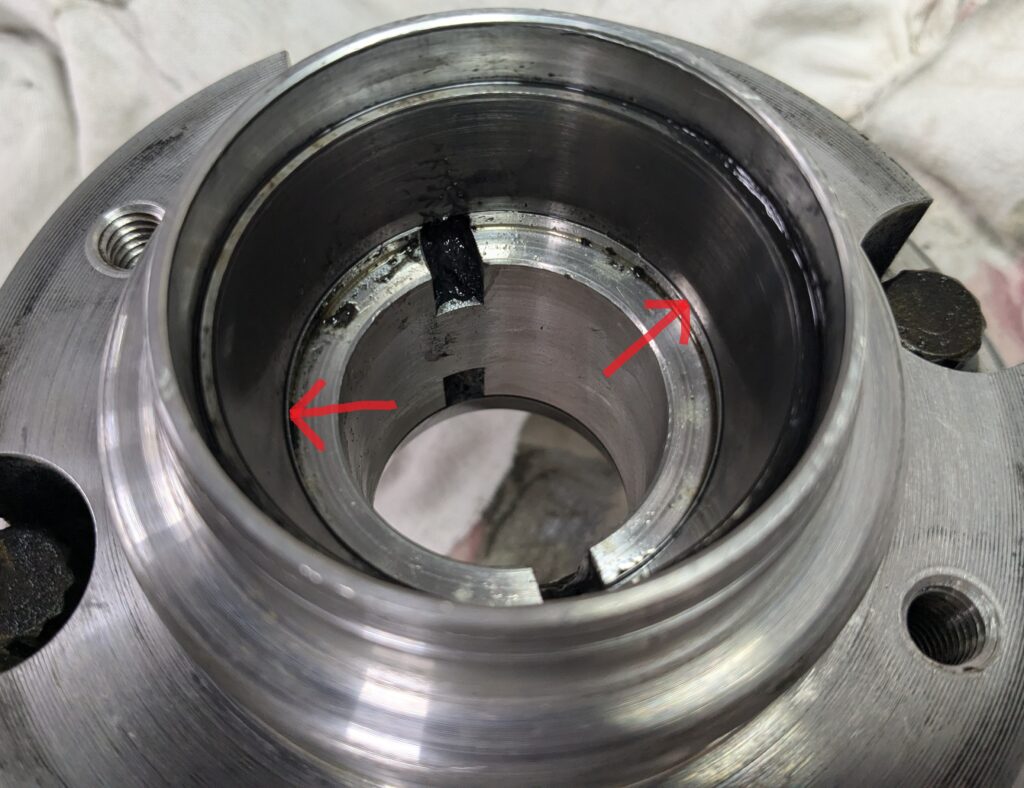A Southwick front hub failed at PittRace in July, 2024. The good news, no collateral damage, the wheel stayed put and the car was driven in. The pieces that separated holds the inner bearing race.
Note: All pictures are clickable to full size in a new tab.
The parts that separated took a beating are quite deformed.
The hub on the left is what they are supposed to look like, the hub on the right shows what I removed from the car. The area around the bolt holes where the rotor attaches to the hub look different between the two hubs, but the bolts that hold the rotor on were correctly torqued on both hubs. The broken hub did run several laps as indicated by excessive brake dust and the aluminum chips that were all over, I am thinking when I applied the brakes with the hub flopping about I really stressed the area where the rotor bolts on.
The two pieces that sheared off hold the race for the inner bearing.
Back in 2001, Jack Drews worked with Southwick Machine and Design to develop an aluminum racing front hub for the TR3-6 using the alloy 6061 T6. This hub became the go-to solution for the big chassis TR racers in North America, and undoubtedly ended up on countless street cars.
The failed hub entered service in 2015 on a TR250 vintage racecar. This pair of hubs was never previously installed on a car, however the time frame of when Southwick made them is unknown. The hub failed 3 events into the car’s second logbook, so the hub has seen some track time, but certainly not a lot. The car has only run Hoosier Speedsters, 205/60R15. A decent Vintage racing tire, but nowhere near as sticky as some. While the TR250 tends to run OK in vintage events, it stands to reason people running stickier tires or slicks on Southwick hubs are putting even more stress on their hubs.
The hubs were running the same Timken bearings that were originally installed on the uprated spindle and the spacer/shim pack so the spindle nut is torqued down and bearing preload is set by the shim pack. The inner bearing and spindle were not affected by the failure. The outer bearing got a bit hammered by the wobble when the inner bearing was no longer attached to the hub.
The broken hub was on the right side, so it saw the most stress when turning left. Since we run predominantly at tracks that run clockwise, it stands to reason the left side sees more stress. I can’t recall any off-track excursion that might have stressed the hub.
I checked in with Tony Drews, who took over manufacturing the hubs from his dad Jack, and Richard Good who now manufactures the hubs, and neither have heard of any hub failures until this one.
I contacted Richard Good about the hubs he has sold over the years. He started selling the Southwick hubs made from 6061. Then he took over the manufacture of the hub in mid-2013, at this point the hub maintained the Southwick design, but the material was changed to 7075. Then, in mid-2020, Richard redesigned the hub as shown below, the stud heads are encased in pockets. Also note the GoodParts hub is anodized, we have never seen a Southwick hub that was anodized. It is possible an early run of GoodParts hubs were not anodized, but all the later runs were anodized.
If you bought hubs from GoodParts, the key is when you made the purchase. If you bought your hubs from GoodParts before June, 2013, you certainly have the same hub as mine that failed.
I reached out to our staff metallurgist Chuck Gee, who suggested testing with a dye penetrant in the area of the failure seems like a good start to ensure your hubs do not suffer the same fate as mine did. Chuck’s opinion, based only on pictures I have sent him, is the failure initiated on the inside, below the bearing race. This means removing the inner race to see the area where the fracture starts. Chuck’s quote worth repeating here, “Definitely worth inspecting the existing ones out there.”
The bolts holding the brake rotor onto the hub face were properly torqued. No indication of movement between the rotor and the hub.
This larger piece of the broken collar did retain the inner bearing race, but as it was no longer attached to the hub, the rear of the hub was free to wobble about, putting all the stress on the outer bearing.
The smaller piece fell out as I removed the hub/rotor assembly. Both parts of the broken collar are quite distorted, but the surface that sheared is not.
The bearing race does not show any discoloration indicating it ran hot. I do not believe the root cause had anything to do with heat or the bearings.
Here is the bearing, it looks pretty good.
The undamaged hub shows the machinist did put a small radius in the area that failed. The arrows show where the failure occurred and the circumference to perform dye penetrant testing.
The Southwick hub with the inner race still installed. You will need to drive out the race and perform the dye penetrant testing at the around the circumference where the base of the race sits.
Or consider upgrading to a new pair of hubs made of 7075!
If you are still interested, I added another page with even more pictures, as my conversations with experts to determine the root cause of the failure led to another round of pictures. Additional pictures here,

